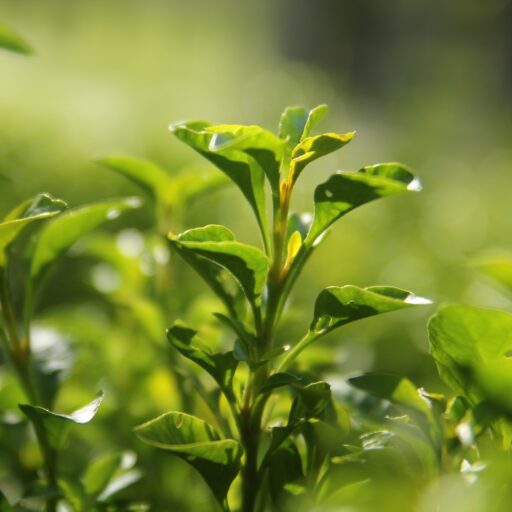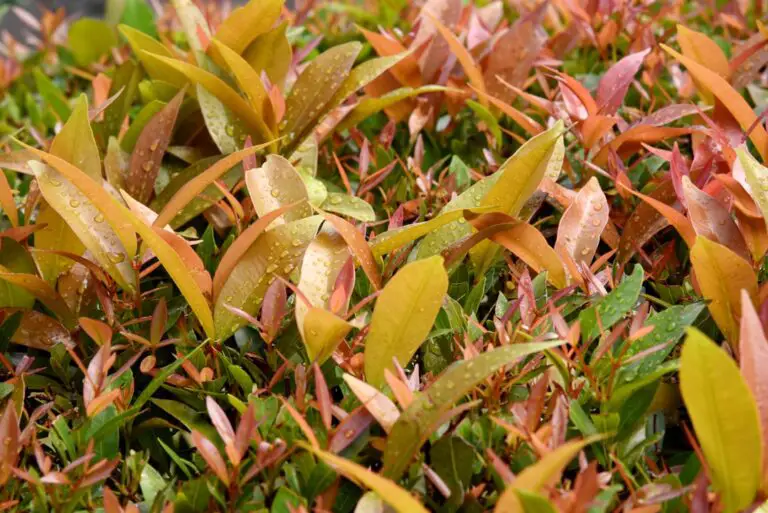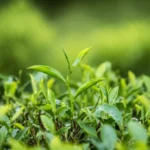Support our educational content for free when you purchase through links on our site. Learn more
How Do I Propagate Tea Plants? 🌱 7 Expert Methods Revealed (2025)
Have you ever dreamed of growing your very own tea garden, plucking fresh leaves to brew a perfect cup right at home? Propagating tea plants might sound like a mysterious art reserved for seasoned growers, but with the right know-how, anyone can do it! At Growing Teas™, we’ve spent years mastering the secrets of tea plant propagation—from cuttings to layering and even seed germination.
Did you know that commercial tea estates rely almost exclusively on cuttings to ensure every cup tastes just right? But what if you want to experiment with seeds or try layering? In this comprehensive guide, we’ll walk you through 7 proven propagation methods, reveal insider tips to boost your success, and share troubleshooting hacks that will save your precious cuttings from common pitfalls. Plus, we’ll explore how to create the perfect environment for your tea babies to thrive. Ready to cultivate your own leafy legacy? Let’s dive in!
Key Takeaways
- Cuttings are the most reliable and popular method for propagating tea plants, producing clones identical to the parent.
- Timing and environment matter: Late spring to early summer, high humidity, and bright indirect light maximize rooting success.
- Rooting hormones significantly improve results by stimulating root growth and preventing infection.
- Alternative methods like layering and seed propagation offer fun experiments but come with pros and cons.
- Patience is essential: Rooting can take from weeks to over a year depending on conditions and method.
- Proper soil, watering, and pest management are critical to nurturing young tea plants into healthy bushes.
- Scaling up for commercial growing requires specialized facilities and mother plant selection to maintain tea quality and yield.
Curious about which rooting hormone or pruning shears we swear by? Or wondering how to harvest your first homegrown tea leaves? Keep reading for all the juicy details and expert advice!
Table of Contents
- ⚡️ Quick Tips and Facts About Propagating Tea Plants
- 🌱 Tea Plant Propagation: A Leafy Legacy and Growing History
- 🔍 Understanding Tea Plant Biology: Why Propagation Works
- 🌿 1. Propagating Tea Plants Using Cuttings: Step-by-Step Guide
- 🌱 2. Growing Tea Plants from Seeds: Tips and Tricks
- 🌿 3. Layering Method for Tea Plant Propagation: Pros and Cons
- 🌞 Ideal Environmental Conditions for Successful Tea Plant Propagation
- 💧 Watering and Soil Requirements for Young Tea Plants
- 🛠️ Tools and Materials You’ll Need to Propagate Tea Plants Like a Pro
- 🐞 Common Pests and Diseases to Watch Out for During Propagation
- 🌿 Troubleshooting Propagation Problems: Why Your Tea Cuttings Might Fail
- 🌍 Sustainable and Organic Practices in Tea Plant Propagation
- 📈 Scaling Up: How to Propagate Tea Plants for Commercial Growing
- 🍵 Harvesting Your First Homegrown Tea Leaves: When and How
- 🎯 Conclusion: Mastering the Art of Tea Plant Propagation
- 🔗 Recommended Links for Tea Plant Propagation Enthusiasts
- ❓ FAQ: Your Burning Questions About Propagating Tea Plants Answered
- 📚 Reference Links and Further Reading
Here is the main content for your blog post.
⚡️ Quick Tips and Facts About Propagating Tea Plants
Welcome, tea lovers! You’ve come to the right place. We at Growing Teas™ have spent years with our hands in the soil, coaxing the beautiful Camellia sinensis—the plant that gives us the world’s most popular beverage—to multiply and thrive. So, you want to propagate your own tea plants? Fantastic! It’s a deeply rewarding journey. Before we dive deep, here are some quick takeaways to get you started:
- Cloning is King ✅: For consistency, propagating tea plants from cuttings is the gold standard. This method creates a genetic clone of the parent plant, ensuring the flavor profile of your tea remains the same. This is why commercial growers almost exclusively use this method.
- Timing is Crucial 🗓️: The best time to take cuttings is during a period of active growth, typically in late spring or early summer. This gives the cutting the best chance to develop roots before winter.
- Patience, Young Grasshopper 🙏: Don’t expect instant results! While some cuttings might show roots in 6-8 weeks, the entire process can be a long game. Some experts note it can take 12–15 months for a cutting to develop a robust root system ready for transplanting.
- Humidity is Your Best Friend 💧: “The key to successful propagation is to keep the cuttings consistently moist and humid.” A simple plastic bag or a propagator can create the perfect mini-greenhouse environment.
- Hormone Helper 🧪: While not mandatory, using a rooting hormone can “significantly increase your chances of success.” It encourages the cutting to develop roots more quickly and reliably.
- Seed Surprise 🎲: Growing from seed is possible, but it’s a genetic lottery. The resulting plant may not have the same characteristics as its parent, which can be a fun experiment for a home grower but a risk for commercial production.
🌱 Tea Plant Propagation: A Leafy Legacy and Growing History

Have you ever wondered how your favorite tea, with its distinct and reliable flavor, is produced year after year? It’s not magic; it’s the ancient art and science of propagation! The history of tea cultivation is a fascinating story of discovery and refinement. For centuries, tea was grown from seeds, leading to wide variations in quality. But as the demand for consistent, high-quality tea grew, growers perfected the technique of vegetative propagation.
This shift was a game-changer. By taking cuttings, tea estates could replicate their best-performing plants, ensuring that every cup of tea produced would have the desired taste and aroma. This is a practice we cherish, as it allows us to preserve the unique qualities of exceptional tea varieties.
There are two main stars of the tea world:
- Camellia sinensis var. sinensis: The Chinese tea plant. With smaller, delicate leaves, it’s more suited to milder climates and is the parent of most green, white, and oolong teas. It’s the variety we have the most success with in our own gardens.
- Camellia sinensis var. assamica: The Indian tea plant. This variety boasts larger leaves and thrives in tropical, rainy climates. It’s the backbone of the world’s black tea production.
Understanding which type you’re working with can help you tailor your propagation and care for the best results. For a deeper dive into the origins of these amazing plants, check out our articles on the History of Tea.
🔍 Understanding Tea Plant Biology: Why Propagation Works
It seems almost magical, doesn’t it? The idea that a small piece of a stem can grow into a whole new plant. But it’s pure science! The secret lies in a concept called totipotency. This means that many plant cells (especially those in the stem) are like master stem cells—they hold all the genetic information needed to differentiate and grow into any part of the plant, including roots, stems, and leaves.
When you take a cutting, you’re essentially hitting the reset button on those cells. By providing the right conditions—humidity, warmth, and a little encouragement from a rooting hormone—you trigger these cells to start developing into roots.
A scientific study on optimizing tea propagation highlights that applying rooting powder significantly promotes the formation of a callus, which is a mass of undifferentiated cells that forms on the wound of the cutting. This callus is the precursor to new roots. Think of it as the construction site where the foundation for your new plant is being laid! It’s a fascinating process that showcases the incredible resilience and adaptability of the plant kingdom.
🌿 1. Propagating Tea Plants Using Cuttings: Step-by-Step Guide
Alright, let’s get our hands dirty! This is our tried-and-true method, combining our own experience with insights from across the tea-growing world. Follow these steps, and you’ll be well on your way to a thriving new tea plant.
Step 1: Choose Your Parent Plant
Select a healthy, vigorous Camellia sinensis plant that is free of pests and diseases. The best cuttings come from semi-hardwood stems—this means wood from the current season’s growth that has started to mature but is not yet old and tough.
Step 2: Make the Cut
Using clean, sharp pruning shears (we love our Fiskars for this), take a cutting that is about 6-8 inches long. Make a clean, angled cut just below a leaf node (the little bump where a leaf grows from). The angle increases the surface area for root development.
Step 3: Prep the Cutting
This is a crucial stage. Carefully remove the leaves from the bottom two-thirds of the cutting. This prevents the cutting from losing too much water through transpiration and directs its energy toward root production. You can leave 2-3 leaves at the top. If the remaining leaves are large, you can cut them in half horizontally to further reduce moisture loss.
Step 4: Apply Rooting Hormone
Pour a small amount of rooting hormone powder or gel into a separate container to avoid contaminating the main supply. Dip the bottom inch of your cutting into the hormone, ensuring the angled cut and the lowest leaf nodes are covered. Gently tap off any excess.
Our Go-To Rooting Hormones:
- Clonex Rooting Gel: This gel formula seals the cut tissue, helping to prevent infection and delivering hormones right where they’re needed.
- Garden Safe TakeRoot Rooting Hormone: A reliable powder-based option that has served us well for years.
👉 CHECK PRICE on:
Step 5: Plant Your Cutting
Now, where will your new plant live? You have options:
- Traditional Medium: A mix of perlite and peat moss (or coco coir) provides excellent drainage and aeration.
- Innovative Sponge Method: A fascinating study showed success with using sponges as a culture medium, which could be a fun experiment!
Fill a small pot or tray with your chosen medium. Use a pencil or a dibber to make a hole, then gently insert the cutting. Firm the medium around the cutting to ensure good contact.
Step 6: Create a Humid Haven
This is non-negotiable! Your cutting has no roots to absorb water, so it relies on the moisture it can absorb through its leaves. Cover the pot with a clear plastic bag, a plastic dome, or the top half of a plastic bottle. This will trap humidity. Place your setup in a location with bright, indirect light. Direct sunlight will cook your cutting!
Step 7: The Waiting Game
Keep the medium consistently moist but not waterlogged. Air out the cutting every few days for about 10 minutes to prevent mold. Now, we wait. You might see new leaf growth in a few weeks, which is a great sign that things are happening below the surface. To check for roots, give the cutting a very gentle tug. If you feel resistance, you have roots! But be patient; as we mentioned, this can take anywhere from a couple of months to over a year.
For a great visual guide, the first YouTube video embedded in this article, “Making cuttings from Tea Plants – How to propagate!” by Table Rock Tea Company, provides an excellent walkthrough of this entire process.
🌱 2. Growing Tea Plants from Seeds: Tips and Tricks
While cuttings give you a clone, growing from seed is an adventure! You never know exactly what you’ll get. It’s a longer process, but incredibly rewarding.
Step 1: Source Your Seeds
First, you need fresh, viable seeds. Look for reputable suppliers online or from specialty nurseries. Tea seeds don’t stay viable for long, so try to plant them as soon as possible.
Step 2: Prep the Seeds
Tea seeds have a hard outer shell. To improve germination, you need to scarify them. Gently nick the seed coat with a file or sandpaper, being careful not to damage the inside. After scarifying, soak the seeds in warm water for 24-48 hours.
Step 3: Plant and Wait
Plant the seeds about an inch deep in a well-draining, acidic soil mix. Keep the soil moist and warm. Germination can be slow and erratic, taking anywhere from one to three months. Once your seedling has a few sets of true leaves, you can treat it like a young plant.
🌿 3. Layering Method for Tea Plant Propagation: Pros and Cons
Looking for a nearly foolproof method? Try layering! This technique encourages a stem to grow roots while it’s still attached to the parent plant, dramatically increasing the success rate.
- How it Works:
- Find a low-hanging, flexible branch on your tea plant.
- Bend it down to the ground.
- At the point where it touches the soil, make a small cut or scrape the bark on the underside of the stem.
- You can apply a little rooting hormone to the wound for good measure.
- Pin the branch to the ground with a U-shaped stake or a rock and cover the wounded section with soil.
- Keep the area moist.
In several months to a year, the layered section will develop its own root system. Once it has, you can snip it from the parent plant and pot it up!
| Pros of Layering | Cons of Layering |
|---|---|
| ✅ Very high success rate | ❌ Produces only a few plants at a time |
| ✅ Low stress on the new plant | ❌ Requires a parent plant with a suitable shape |
| ✅ Simple and requires few tools | ❌ Can take a long time to produce a new plant |
🌞 Ideal Environmental Conditions for Successful Tea Plant Propagation
Your tea cuttings are like newborns—they need a carefully controlled environment to thrive. Getting this right is just as important as the cutting technique itself.
- Light: Think “bright but not burning.” A spot near an east-facing window or under a grow light is perfect. Avoid direct southern or western sun, which will scorch the leaves and dry out the cutting before it can root.
- Temperature: Tea plants enjoy moderate temperatures. Aim for a consistent range between 65-75°F (18-24°C). Avoid drastic temperature swings.
- Humidity: We can’t say it enough: high humidity is essential. Aim for 70-80% humidity inside your mini-greenhouse. If the leaves start to look wilted, it’s a sign the air is too dry. A daily misting with a spray bottle can help.
💧 Watering and Soil Requirements for Young Tea Plants
Once your cutting has rooted and is ready to be potted up into its own container, the game changes slightly. Now, the focus shifts to providing the right foundation for long-term growth.
Watering Wisdom
The golden rule is to keep the soil consistently moist but never waterlogged. Overwatering is the number one killer of young plants, as it leads to root rot.
- How to Check: Stick your finger about an inch into the soil. If it feels dry, it’s time to water. If it’s still damp, wait another day.
- Technique: Water thoroughly until you see water coming out of the drainage holes. Then, let the pot drain completely.
Soil Science
Camellia sinensis is an acid-loving plant. It thrives in soil with a pH between 5.5 and 6.5.
- The Right Mix: Use a high-quality, well-draining potting mix designed for acid-loving plants like azaleas or rhododendrons. You can also create your own mix using peat moss, compost, and perlite.
- Good Drainage: Ensure your pot has plenty of drainage holes. A layer of gravel at the bottom is a myth and can actually hinder drainage—just use good soil!
For more tips on creating the perfect environment, explore our guides on Green Tea Cultivation.
🛠️ Tools and Materials You’ll Need to Propagate Tea Plants Like a Pro
Having the right gear makes any job easier and more successful. Here’s a checklist of what we recommend having on hand.
| Tool / Material | Purpose | Our Recommendation |
|---|---|---|
| Pruning Shears | For making clean, precise cuts. | Fiskars or Felco brands are top-notch. |
| Pots/Trays | To hold your cuttings and rooting medium. | 3-4 inch pots or seedling trays work well. |
| Rooting Hormone | To stimulate root growth. | Clonex Gel or Garden Safe TakeRoot Powder. |
| Rooting Medium | The substrate your cuttings will root in. | A 50/50 mix of peat moss and perlite. |
| Plastic Domes/Bags | To create a high-humidity environment. | Re-used food containers or Ziploc bags work great! |
| Spray Bottle | For misting your cuttings to maintain humidity. | Any standard spray bottle will do. |
👉 Shop Propagation Supplies on:
- Fiskars Pruning Shears: Amazon | Walmart
- Seedling Trays with Domes: Amazon | Etsy
- Perlite: Amazon | Walmart
🐞 Common Pests and Diseases to Watch Out for During Propagation
Your delicate new cuttings can be vulnerable to a few common problems. Here’s what to watch for and how to deal with it.
- Fungal Gnats: These tiny, annoying flies are a sign that your soil is too wet. They lay their eggs in damp soil, and their larvae can feed on the tender new roots of your cuttings.
- Solution: Let the top layer of soil dry out between waterings. You can also use sticky traps to catch the adults.
- Mold and Fungus: The high-humidity environment that your cuttings love is also perfect for mold.
- Solution: Ensure good air circulation by opening your propagator for a few minutes each day. If you see mold, you can spritz it with a very dilute solution of hydrogen peroxide and water.
- Aphids and Spider Mites: These sap-sucking pests can sometimes find their way into your propagation setup.
- Solution: At the first sign, wipe them off with a damp cloth or spray the plant with a gentle insecticidal soap or neem oil solution.
🌿 Troubleshooting Propagation Problems: Why Your Tea Cuttings Might Fail
Feeling discouraged because your cuttings aren’t taking? Don’t give up! Propagation is a numbers game, and even the pros have failures. Here are some common issues and their solutions.
- Problem: My cuttings turned black and mushy at the base.
- Likely Cause: Root rot from overwatering or a non-sterile medium.
- Solution: Unfortunately, this cutting is likely a goner. For your next batch, ensure your medium is just moist, not soggy, and use clean pots and tools.
- Problem: The leaves on my cuttings turned yellow and dropped off.
- Likely Cause: This can be a sign of stress, which is normal. However, if all the leaves drop, the cutting may not have enough energy to produce roots. It could also be a sign of too little light.
- Solution: Ensure the cutting is in bright, indirect light and that you left a few leaves at the top to photosynthesize.
- Problem: It’s been months, and nothing is happening!
- Likely Cause: Patience is crucial! It can genuinely take a very long time. It could also be that the cutting was taken from old, woody growth that is slower to root, or the temperature is too cool.
- Solution: As long as the stem is still green and firm, there’s hope. Check your environmental conditions and give it more time.
🌍 Sustainable and Organic Practices in Tea Plant Propagation
As growers, we’re also stewards of the land. You can easily incorporate sustainable and organic practices into your propagation efforts.
- DIY Rooting Hormone: You can make your own rooting stimulant by soaking willow twigs in water. Willow contains salicylic acid and indolebutyric acid, which encourage root growth.
- Peat-Free Alternatives: The harvesting of peat moss can be environmentally destructive. Consider using coco coir, a renewable byproduct of the coconut industry, as the base for your rooting medium.
- Organic Pest Control: Instead of reaching for chemical pesticides, rely on solutions like neem oil, insecticidal soaps, and introducing beneficial insects to your garden.
- Water Conservation: Use drip irrigation or bottom-watering techniques to deliver water directly to the roots and reduce evaporation.
These practices are central to our philosophy of Green Tea Cultivation, ensuring both a healthy plant and a healthy planet.
📈 Scaling Up: How to Propagate Tea Plants for Commercial Growing
Ever dream of having your own little tea farm? Moving from a few cuttings on a windowsill to hundreds or thousands requires a more systematic approach. This is where the “great importance for tea production” of optimizing cutting methods really comes into play.
- Mother Plant Selection: Commercial growers maintain specific “mother plants” that have proven superior traits (flavor, yield, disease resistance). All propagation material is taken from these elite plants to ensure quality.
- Efficiency is Key: Methods are optimized for speed and success rate. The study that achieved a 42% rooting rate in just one month using sponges and a specific rooting powder concentration is a great example of the innovation happening in this field.
- Dedicated Facilities: Large-scale propagation happens in climate-controlled greenhouses with automated misting and lighting systems to create the perfect rooting environment for thousands of cuttings at once.
- The Long-Term View: Remember, it’s a significant time investment. It takes about 3-4 years from taking a cutting to the first commercial harvest. This long-term planning is essential for any commercial tea venture.
🍵 Harvesting Your First Homegrown Tea Leaves: When and How
This is the moment you’ve been waiting for! After years of patient nurturing, your propagated plant is ready to give back.
When to Harvest
Don’t rush it! A young tea plant needs time to establish a strong frame and root system. We recommend waiting until the plant is at least three years old and about three feet tall before you start harvesting. The best time to harvest is in the spring when the plant is putting out a “flush” of new, tender growth.
How to Harvest
The classic harvesting technique is to pluck the top “two leaves and a bud.” This is the youngest, most tender part of the plant and will produce the highest quality tea.
- Gently pinch the stem just below the second leaf with your fingers.
- Be careful not to tear the stem or damage the rest of the plant.
- Collect your harvest in a basket, keeping the leaves out of direct sun.
Once you have your precious harvest, the fun of processing begins! Will you make a refreshing green tea or a delicate white tea? The possibilities are endless. For inspiration, check out our guides on DIY Tea Blending. And don’t forget to explore the amazing Health Benefits of Tea that come with every cup.
🎯 Conclusion: Mastering the Art of Tea Plant Propagation

There you have it — the full, leaf-to-root guide to propagating your own tea plants, straight from the soil-stained hands of the Growing Teas™ team. Whether you’re a curious home grower or an aspiring commercial cultivator, propagating tea plants from cuttings remains the most reliable and rewarding method to guarantee the flavor and quality you cherish in every cup.
We’ve walked through the science behind propagation, the step-by-step process, and even the little tricks to keep your cuttings happy and healthy. Remember: patience is your best friend here. Rooting can take anywhere from a couple of months to over a year, but the payoff is a thriving tea plant that’s genetically identical to your favorite parent.
If you’re feeling adventurous, growing from seed or trying layering techniques can add variety and fun to your tea-growing journey, but for consistent results, cuttings with rooting hormone and a humid environment are your best bet.
And what about those unanswered questions? Like how to troubleshoot failures or scale up for commercial success? We’ve covered those too, so you’re fully equipped to tackle any propagation challenge.
So, grab your pruning shears, prepare your rooting medium, and get ready to cultivate your own cup of joy. Your future self (and your tea cup) will thank you!
🔗 Recommended Links for Tea Plant Propagation Enthusiasts
Ready to start propagating? Here are some of our top product picks and resources to help you grow like a pro:
- Clonex Rooting Gel:
Amazon | Walmart - Garden Safe TakeRoot Rooting Hormone Powder:
Amazon | Walmart - Fiskars Pruning Shears:
Amazon | Walmart - Seedling Trays with Domes:
Amazon | Etsy - Perlite (for rooting medium):
Amazon | Walmart
Books to deepen your tea knowledge:
- The Tea Enthusiast’s Handbook by Mary Lou Heiss & Robert J. Heiss — Amazon
- Tea: History, Terroirs, Varieties by Kevin Gascoyne et al. — Amazon
- The Art and Craft of Tea by Joseph Uhl — Amazon
❓ FAQ: Your Burning Questions About Propagating Tea Plants Answered

What is the best time of year to propagate tea plants?
The ideal time is late spring to early summer, when the plant is actively growing. This timing ensures the cuttings have enough warmth and daylight to encourage root formation. Propagating during this period also allows the new plants to establish roots before colder months arrive.
Read more about “Growing Teas Like a Pro: 12 Insider Secrets for Perfect Leaves 🍃 (2025)”
Can tea plants be propagated from cuttings?
✅ Absolutely! Propagating from cuttings is the preferred method for tea plants because it produces genetically identical clones, preserving the flavor and quality of the parent plant. Cuttings taken from semi-hardwood stems during the growing season, treated with rooting hormone, and kept in a humid environment have the highest success rates.
Read more about “How to Propagate Tea Plants: 7 Essential Tips for Success 🍃 …”
How long does it take for tea plant cuttings to root?
Rooting time varies widely. According to growers and studies, roots can start forming in 6-8 weeks under ideal conditions, but it can take up to 12-15 months for a cutting to develop a robust root system ready for transplanting. Patience is key!
What soil conditions are ideal for growing tea plants?
Tea plants prefer acidic, well-draining soils with a pH between 5.5 and 6.5. A mix of peat moss (or coco coir as a sustainable alternative) and perlite provides excellent drainage and aeration. Avoid heavy, waterlogged soils to prevent root rot.
Read more about “How to Care for a Tea Plant: 13 Expert Tips for Thriving Growth 🍃 (2025)”
How do I care for young tea plant seedlings?
Young seedlings need consistent moisture without waterlogging, bright indirect light, and protection from extreme temperatures. Keep humidity high, especially during propagation, and gradually acclimate plants to outdoor conditions if moving them outside.
Read more about “How to Grow Tea Indoors: 16 Expert Tips for a Thriving Tea Garden 🌿 (2025)”
Can tea plants be grown indoors from seeds?
✅ Yes, tea plants can be grown indoors from seeds, but germination is slow and unpredictable. Seeds require scarification (scratching the seed coat) and soaking before planting. Keep them in warm, moist, and well-lit conditions. Growing from seed is a rewarding experiment but less reliable for consistent tea quality.
Read more about “Is It Difficult to Grow Your Own Tea? 12 Expert Tips for Success (2025) 🍃”
What are common problems when propagating tea plants and how to fix them?
Fungal Gnats and Mold
Overly wet soil can attract gnats and cause mold. Let soil dry slightly between waterings and ensure good air circulation. Use sticky traps or dilute hydrogen peroxide sprays for mold.
Leaf Drop and Wilting
Often caused by low humidity or too much direct sunlight. Maintain high humidity and provide bright, indirect light.
Root Rot
Caused by overwatering or poor drainage. Use a well-draining medium and water only when the top inch of soil is dry.
Read more about “How Much Maintenance Do Tea Plants Really Need to Thrive? 🌿 (2025)”
📚 Reference Links and Further Reading
- ScienceLearn: Propagating Tea Plants Using Cuttings — A great visual resource on tea propagation.
- My Japanese Green Tea: I Propagated My First Tea Plant — Personal experience and practical tips.
- Chinbull Botany: Optimized Tea Plant Propagation — Scientific study on improving rooting rates.
- Clonex Rooting Gel Official Site — Product details and usage tips.
- Fiskars Official Website — Trusted pruning tools for gardeners.
For more expert insights and tea-growing inspiration, explore our Growing Teas™ blog.
Happy propagating! Your perfect cup of tea is just a cutting away. 🍃🍵








